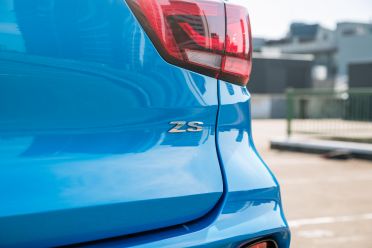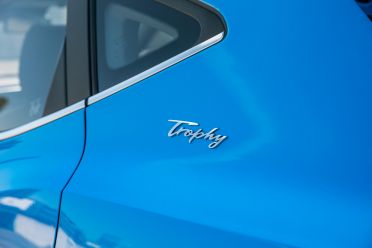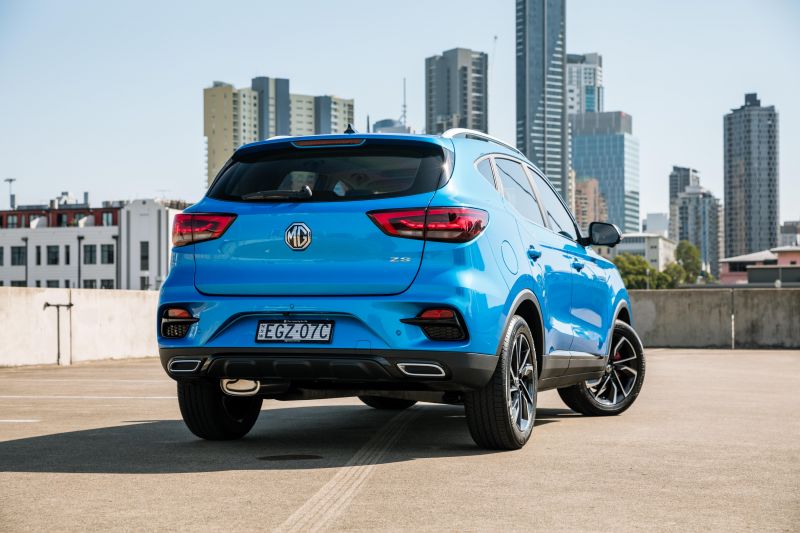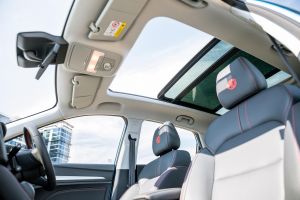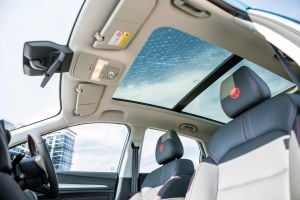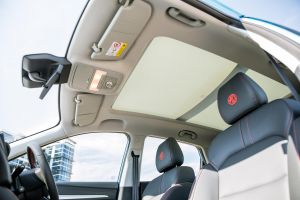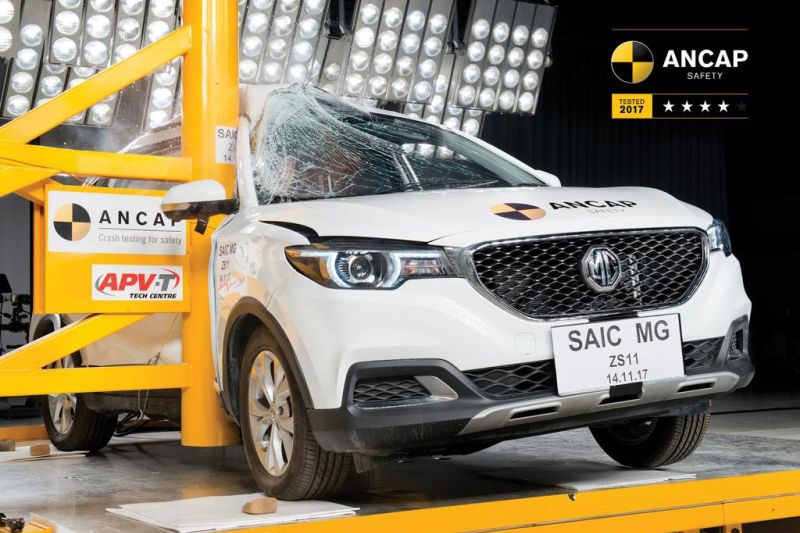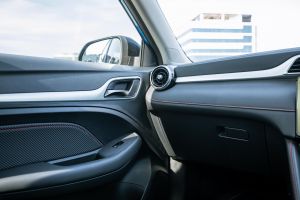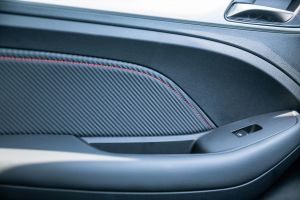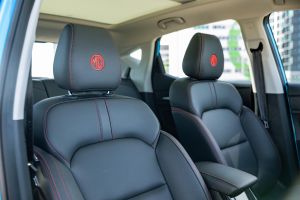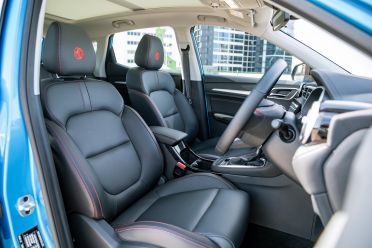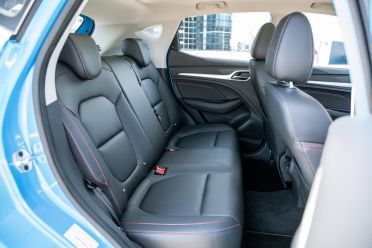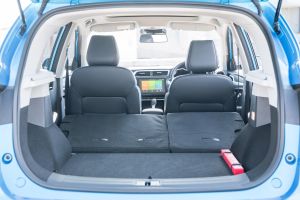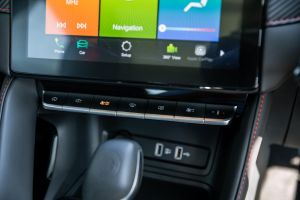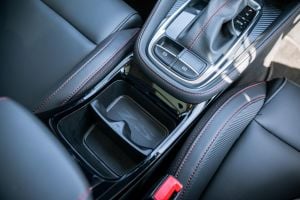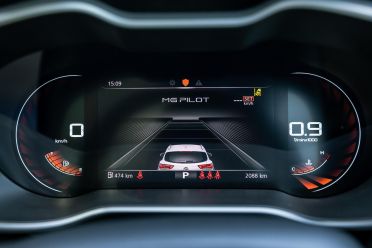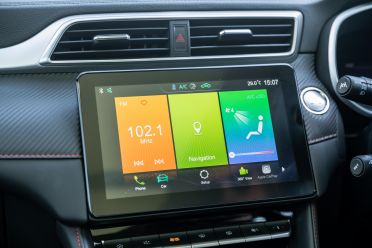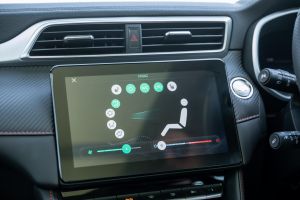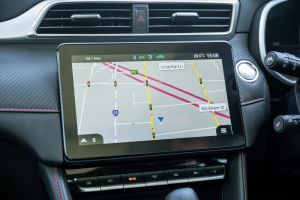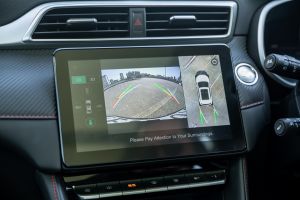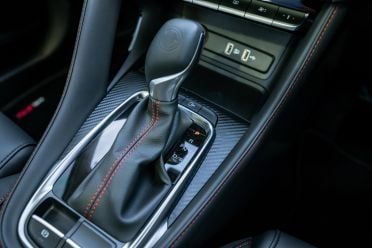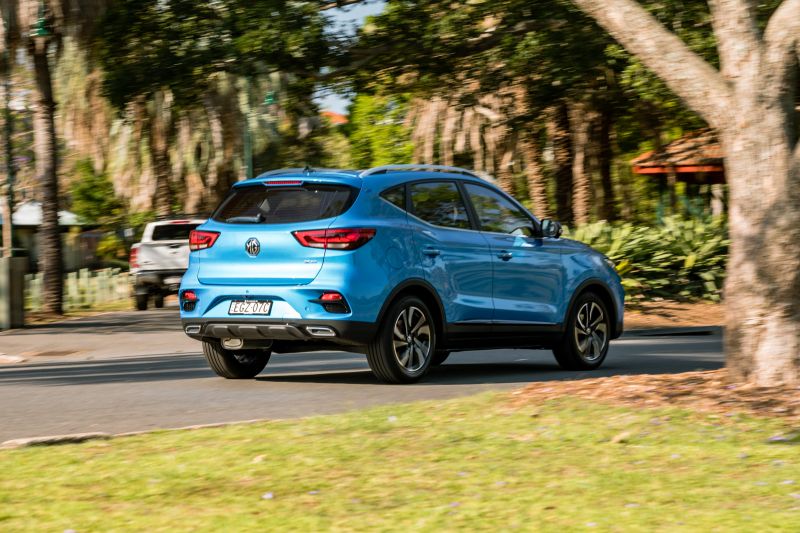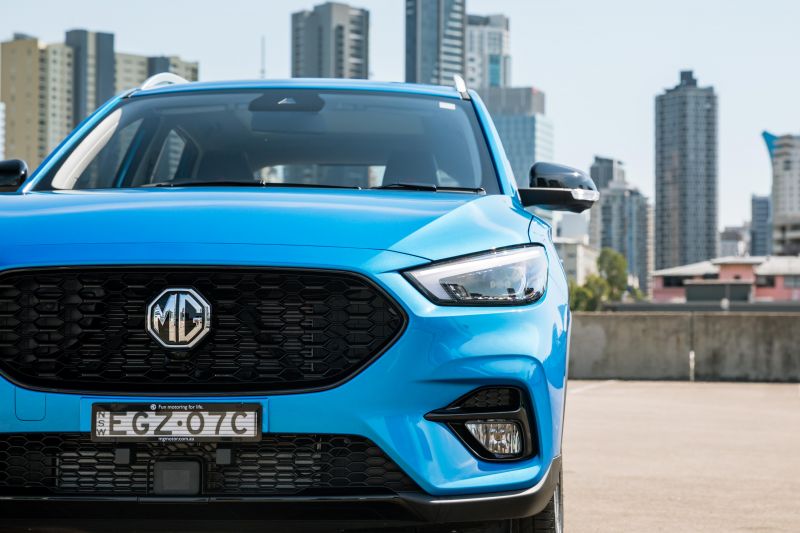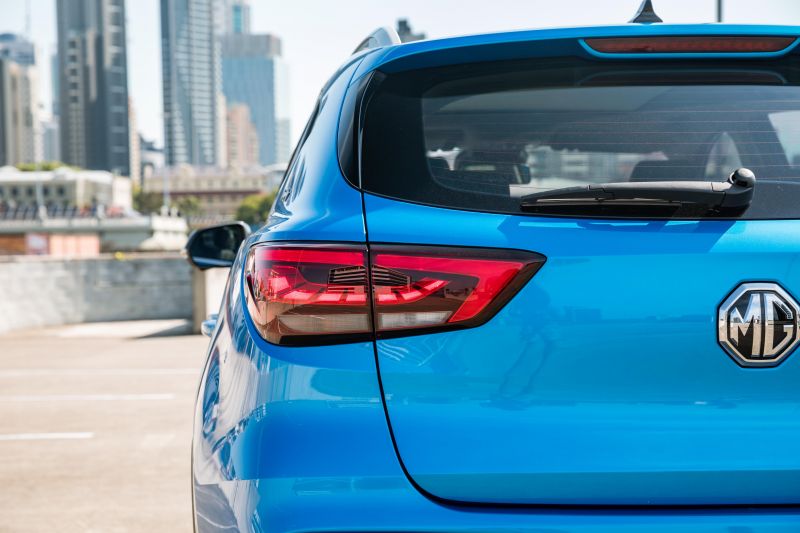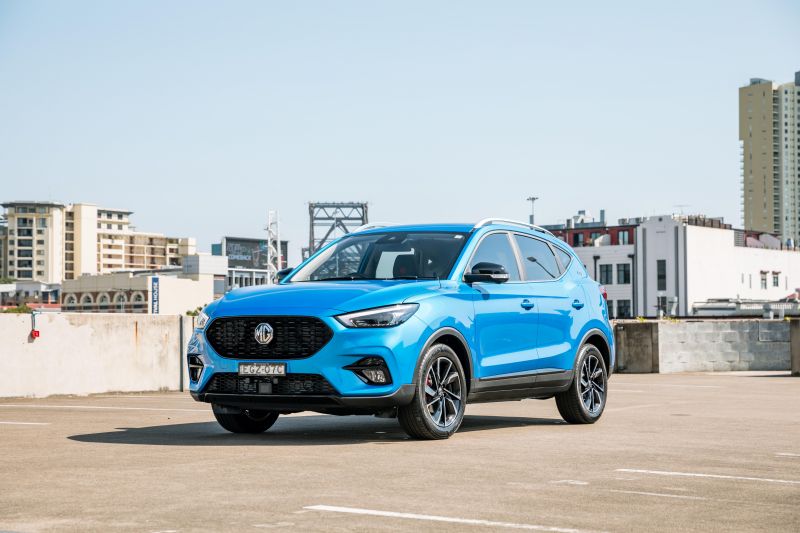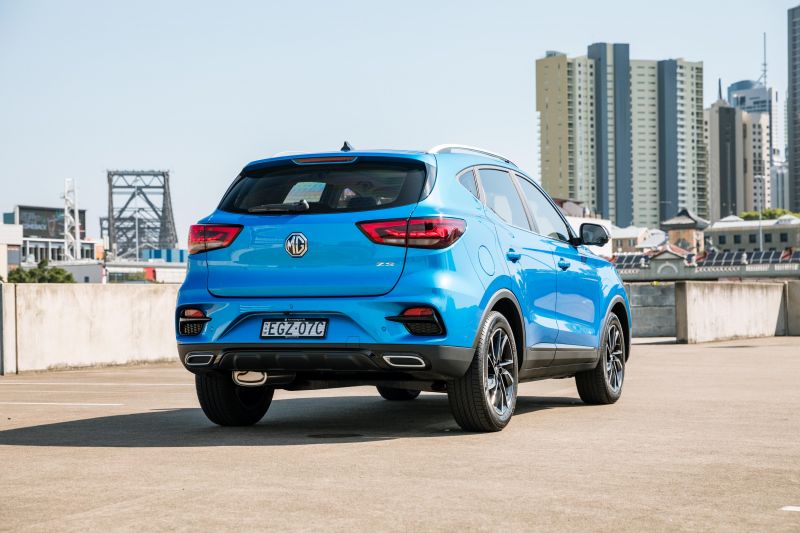If you’ve just started paying attention to MG, one of the fastest growing brands in Australia, you might be a bit confused by its model range.
Its smallest SUV is called the ZS, dusting off a nameplate last used on a V6-powered, Honda Civic-based small sedan and hatch. But this year, it’s been joined by two ZS derivatives: the ZS EV and the ZST, marketed somewhat as separate model lines.
Both gain a suite of active safety technology called MG Pilot, which is also what MG calls its adaptive cruise control and lane-keeping assist functions. But while the ZS EV looks like the ZS but adds an electric powertrain, the ZST has a new front end appearance, massaged rear, and an updated interior.
The new ZST name seems to have been a last-minute change. The exterior badging reads ZS, though a trip to an MG dealership revealed some have ZST badges. Likewise, the owner’s manual and floor mats also bear the name of MG’s cheaper SUV upon which the ZST is based.
Another badging quirk: the ZST Essence has a Trophy badge between its C-pillar and D-pillar, as that’s the name of the trim level in China. The HS Essence has a similar quirk, and the current HS line has also been joined in China by an updated model that’s running in tandem with it, boasting a front end similar to the ZST. Should we expect to see that here soon as the HST?
Regardless of what it’s called, the ZST offers more power and more safety equipment than the ZS and serves as a rival to small SUVs like the Kia Seltos and Mitsubishi ASX.

How much does the MG ZST Essence cost?
MG has lowered the price of the ZS to give the ZST a little breathing room during the 12 months or so in which they’ll be sold concurrently.
Yes, that set-up sounds a little odd but it’s par for the course for a Chinese brand, at least in the Chinese market. Haval, for example, sells three generations of H6 concurrently there.
While the ZS is priced from $21,990 to $26,990 drive-away, the ZST is currently priced at $29,490 drive-away for the base Excite.
The only other variant, the Essence featured here, is priced at $32,490 drive-away. List prices are advertised as $28,490 and $31,490 before on-road costs, respectively.
What do you get?
Both ZST models come standard with a 10.1-inch touchscreen infotainment system featuring satellite navigation and wired Android Auto/Apple CarPlay. They also feature keyless entry and start, automatic LED headlights, leatherette upholstery, a six-speaker sound system, rain-sensing wipers, and 17-inch alloy wheels.
The Essence adds a huge panoramic sunroof and a digital instrument cluster, as well as heated front seats and power adjustment for the driver’s seat. Unfortunately, DAB radio isn’t available.
Both ZST models come standard with the aforementioned MG Pilot suite. This comprises autonomous emergency braking, forward-collision warning, blind-spot monitoring, lane-keeping assist, lane-departure warning, rear cross-traffic alert, a surround-view camera, and adaptive cruise control with stop/go.
There’s also intelligent speed assist which works independent of the adaptive cruise and detects traffic signs, matching the speed posted on them.
A long feature list
The ZST may cost a bit more than the ZS but it comes with a long feature list and still undercuts similarly-specified rivals.
At $32,490 drive-away, the ZST Essence seems like a bit of a jump in price compared to the ZS. However, looking at the spec sheet it stacks up well against rivals.
A Mitsubishi ASX Exceed offers a similar equipment list, including a huge panoramic sunroof of its own. But it costs $33,490 before on-roads and lacks some of the ZST’s features like a surround-view camera or adaptive cruise control.
The facelifted Mitsubishi Eclipse Cross Aspire has those features – if not the huge sunroof – but is priced at $34,990 before on-roads. The Mazda CX-30 G20 Touring has a similar equipment list to the Eclipse Cross Aspire and an identical price, while the smaller CX-3 best matches the ZST Essence in Akari trim at $33,950 before on-roads.
You’ll pay more for a Kia Seltos Sport+ ($32,790 list) but you’ll miss out on LED headlights and leather upholstery. You’ll get leather in a Hyundai Kona Elite, which costs $30,600 before on-roads with the standard 2.0-litre four-cylinder engine, but you’ll miss out on the MG’s LED headlights, surround-view camera, power driver’s seat, heated front seats and sunroof.
That’s just scratching the surface of the light and small SUV segments. Slightly smaller rivals include the Ford Puma, Nissan Juke, Toyota Yaris Cross and Volkswagen T-Cross, while similarly-sized rivals include the Honda HR-V, Nissan Qashqai, Subaru XV, Suzuki Vitara and Toyota C-HR.
Is the MG ZST safe?
Despite the addition of all that active safety technology and a more rigid subframe, the ZST will retain its ZS stablemate’s ANCAP score. That means a rating of four stars, based on testing conducted in 2017.
The ZS received ratings of Good and Acceptable for whiplash and pedestrian protection respectively, plus a frontal offset score of 10.46 out of 16.
In addition to its suite of active safety technology, the ZST also features front, front-side and curtain airbags for a total of six.
The autonomous emergency braking works at speeds of between 4 and 85km/h for stationary vehicles, 4 and 150km/h for moving vehicles, and 4 and 64km/h for pedestrians.
What is the MG ZST Essence like on the inside?
Open the door and you’re greeted with an attractive, contemporary cabin. Soft-touch materials cover the top half of the dash, with patterned leatherette upholstery spanning the dashboard and doors. We especially like the soft-touch dash top which, with its stitching, looks leather-wrapped.
Build quality isn’t faultless. The glove compartment lid slams open clumsily, while a slight rattle could be heard from the panoramic sunroof at times. But otherwise, everything seems screwed together quite well.
We loved the front seats. They’re easily some of the thickest, cushiest front seats you’ll find in a small SUV today and proved to be both comfortable and supportive. In fact, they remind me of the seats in my old FG Falcon G6E.
The back seat is comfortable, too. There’s more than enough headroom for someone around 180cm tall, despite the panoramic sunroof – it’s more spacious, for example, than a Mitsubishi ASX.
Likewise, legroom is comfortable even for taller passengers and the front seatbacks are covered in leather and pack pockets. The door pockets can fit a 600mL bottle and there are two USB-A outlets located at the base of the centre console though unfortunately there are no air vents. Instead, there’s a little cubby.
Other cabin storage includes a tray at the base of the centre stack that’s large enough for most phones, plus a decent-sized centre console bin and large door pockets in the front doors. The cupholders are poor, though – you’d be lucky to fit one drink in them, let alone two. While we’re griping, the vanity mirrors don’t have lights.
As expected, there are two ISOFIX and three top-tether points for child seats in the second row.
The boot boasts 395L of luggage space, expanding to 1187L with them folded flat. Those figures are par for the class, while underneath the load floor you’ll find a space-saver tyre.
Where the MG fumbles is in its in-car technology, though.
Take the digital instrument cluster. It looks attractive but it’s a case of style over substance. The speedometer and tachometer are so heavily stylised it can be hard to read, with the latter displaying in “1/minx1000” instead of thousands.
The numerical readout for the speedometer is also located to the far left instead of in the middle of the cluster, as is more common, while the fuel level is a bit hard to read at a glance. There’s unfortunately no option to change the display design like other vehicles with digital instrument clusters.
The infotainment system is also superficially attractive but more frustrating once you start to use it. Take the home screen, for example. It’s colourful but even when set to the minimum brightness, it’s just too bright at night.
Some functions, like Android Auto, are also buried in the footer and relegated to the second page.
All the driver assist settings are helpfully accessible via a settings menu in the touchscreen that looks uncannily like Tesla’s interface, which makes toggling features on and off a doddle.
The climate controls can also be adjusted via a menu in the touchscreen though, fortunately, there are also physical controls. I say fortunately because the touchscreen can be slow to respond to inputs.
A friend entering a destination into Google Maps found herself overshooting into About and Settings menus because the screen was so sluggish at responding. And while you’re using smartphone mirroring, touching the physical button for temperature brings up a simple, monochromatic bar labelled Temperature with no actual temperatures listed or any blue or red markings.
The worst part is the in-built satellite navigation. It’s useable and the graphics are clear and crisp, but it takes at least 10 seconds to load when you first press the button. Also worthy of scorn is the surround-view camera – while we love its inclusion in a car at this price point, it’s grainy and low-res.
The touchscreen itself is impressively sized, with smartphone mirroring taking up the whole screen instead of being shunted to one side like on some rival systems. It also avoids the controversial stuck-on tablet look of some rivals.
What’s under the bonnet?
The ZST packs a 1.3-litre turbocharged three-cylinder petrol engine with 115kW of power and 230Nm of torque, sent to the front wheels through a six-speed torque-converter automatic transmission sourced from Aisin.
That’s up from the 82kW and 160Nm on offer from the 1.0-litre turbo three-pot in the ZS. It’s not far off from the turbo 1.5-litre four in the larger HS either, which produces 124kW and 250Nm.
It also stacks up well against front-drive rivals such as the Mazda CX-30 G20 (114kW/200Nm), Mazda CX-3 (110kW/195Nm), Kia Seltos and Hyundai Kona 2.0 (110kW/180Nm), and even the Mitsubishi ASX when equipped with the larger 2.4-litre four (123kW/222Nm).
How does the MG ZST Essence drive?
There’s a bit of hesitation off the line as the turbocharger spools up. Once rolling, though, the ZST’s turbo triple is punchy and the automatic’s shifts are smooth.
The ZST’s engine even has a sporty, raspy engine note under heavy acceleration. Ease off the accelerator, however, and the ZST is impressively hushed. Even at highway speeds, the ZST has a pleasantly quiet cabin for a small SUV.
The electrically-assisted steering is overly light in its standard setting but in Dynamic mode it has a confidence-inspiring amount of weight. We just left it in Dynamic.
Handling is perfectly acceptable for a small SUV. It’s not overly sporty in feel and there’s some body roll in corners but it doesn’t feel too tippy, while the Michelin tyres give the ZST good grip. It’s entirely predictable and a pleasant companion.
Likewise, ride quality is decent for the class. Large expansion joints and potholes can upset the torsion-beam rear a bit but otherwise it smooths out bumps and ruts well.
Other than the turbo lag, about the only disappointing aspect of the ZST’s driving experience is a rather spongy brake pedal.
The panoramic sunroof developed a rattle that appeared sporadically, and when it did it proved especially noisy over poorly-surfaced roads. Speaking of noises, the horn is one of the weediest we’ve heard. Noddy’s key-driven car had a more commanding horn.
Smooth operator
The ZST has a quiet cabin and predictable handling.
The lane-keeping assist needs some finessing. It makes the steering wheel feel loose and disconnected yet it almost aggressively tugs at the wheel to keep you in a lane. It also deactivates at speeds below 60km/h which, in urban traffic, means it’s constantly dinging.
While we could turn off audible alerts for the lane-departure warning, there didn’t appear to be an option for the lane-keeping assist, though we could reduce alert frequencies. After enduring a cacophony of chimes, not to mention visual messages saying “lane-keeping assist quit”, we eventually just turned the feature off.
The adaptive cruise control is controlled via a stalk. You’ll want to take a moment before getting out on the road to look at the stalk and figure out how it works as it’s hidden by the steering wheel when you’re driving in a straight line.
Rather than press a steering wheel button to adjust the vehicle distance, for example, you twist the stalk. That’s not something that’s immediately clear when you’re new to the ZST and it’s something we needed to do as the default setting is overly trepidatious.
How much does the MG ZST Essence cost to run?
Over a mix of inner-city, suburban and highway driving, we averaged 8.8L/100km. A trip to the Sunshine Coast, with mostly highway driving, saw us averaging as little as 6.2L/100km. MG claims a combined cycle rating of 7.1L/100km.
The ZST is covered by a seven-year, unlimited-kilometre warranty with seven years of roadside assist.
Servicing is required every 12 months or 10,000km, whichever comes first. MG is rolling out a capped-price servicing scheme and provided indicative costs at the ZST’s launch earlier this year. The first five services will cost $241, $283, $291, $448 and $241.
CarExpert’s take on the MG ZST Essence
History has a funny way of repeating itself. Many of us didn’t take the Japanese seriously at first, but then they sure showed us they had the chops to make great cars. The Koreans made pretty flimsy cars at first but they’ve now caught up with the Japanese.
So, it was inevitable the Chinese were going to catch up pretty quickly especially considering their willingness to source components, talent and even brand names from established automakers.
That’s not to say the ZST is a class-leader, as evidenced by its sometimes clumsy driver assist and infotainment systems plus its four-star safety rating.
And though MG has been around for a few years now, we still can’t say with 100 per cent certainty that it’s the kind of purchase you can make without thinking, as you can with some Japanese rivals, knowing the resale value and long-term assembly quality and reliability are going to be rock-solid.
And yet, here’s a small SUV that stacks up remarkably well in its segment. It’s fresher inside than a Mitsubishi ASX, uses nicer materials than a Volkswagen T-Cross and is more refined than a Nissan Juke, to name a few similarly-priced crossovers.
It’s a genuinely likeable small SUV, and you don’t need to add the “for a Chinese car” caveat. It has a punchy engine, a well-finished interior and a sharp price. It does most things well and, with a little more finessing, it could pose a serious threat to the established order.
We knew the Chinese would get there eventually but here comes a surprisingly compelling small SUV just a decade after dross like the Geely MK and Chery J11. Progress comes swiftly.
MORE: MG ZST news and reviews
MORE: MG news and reviews

